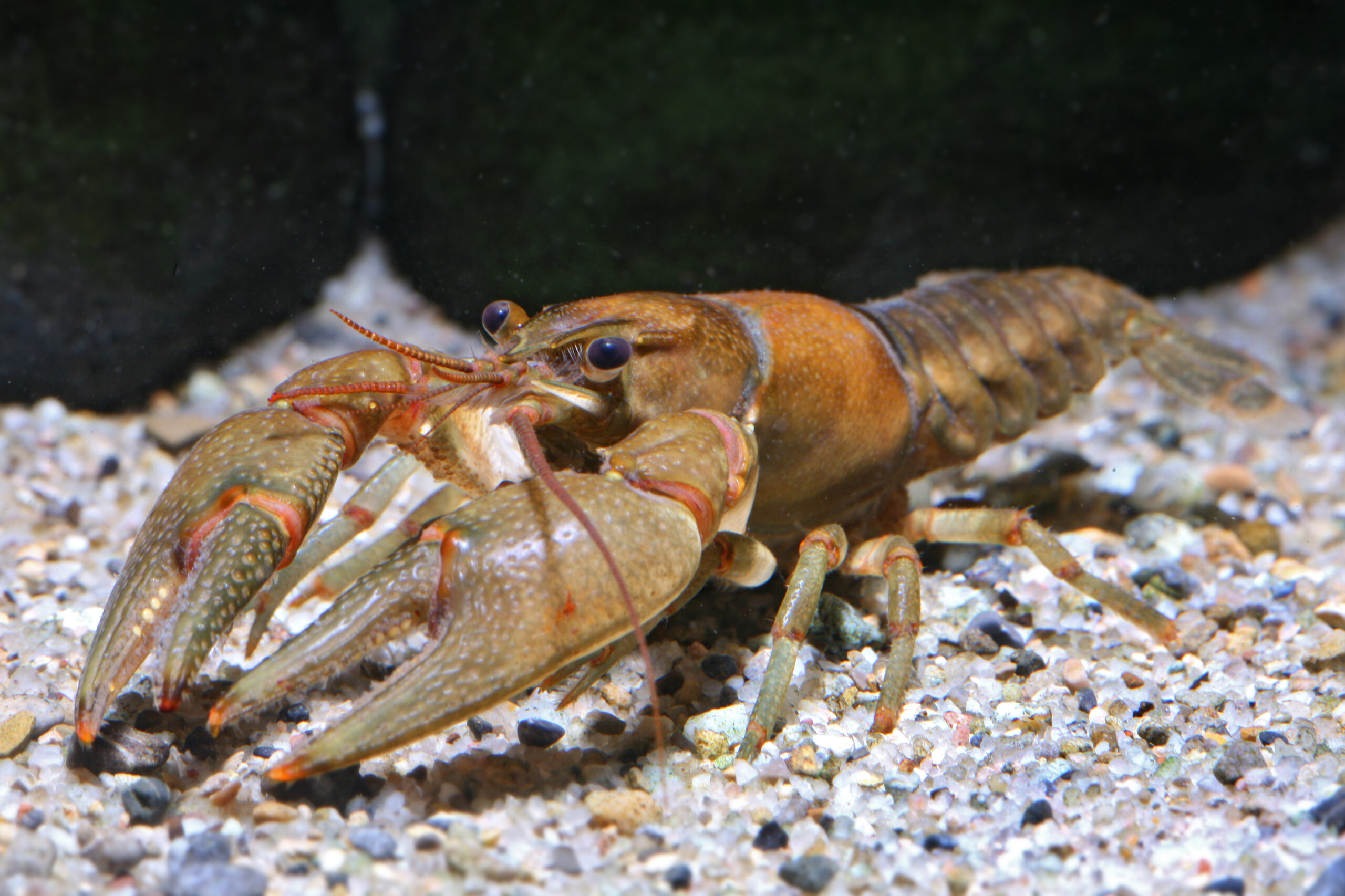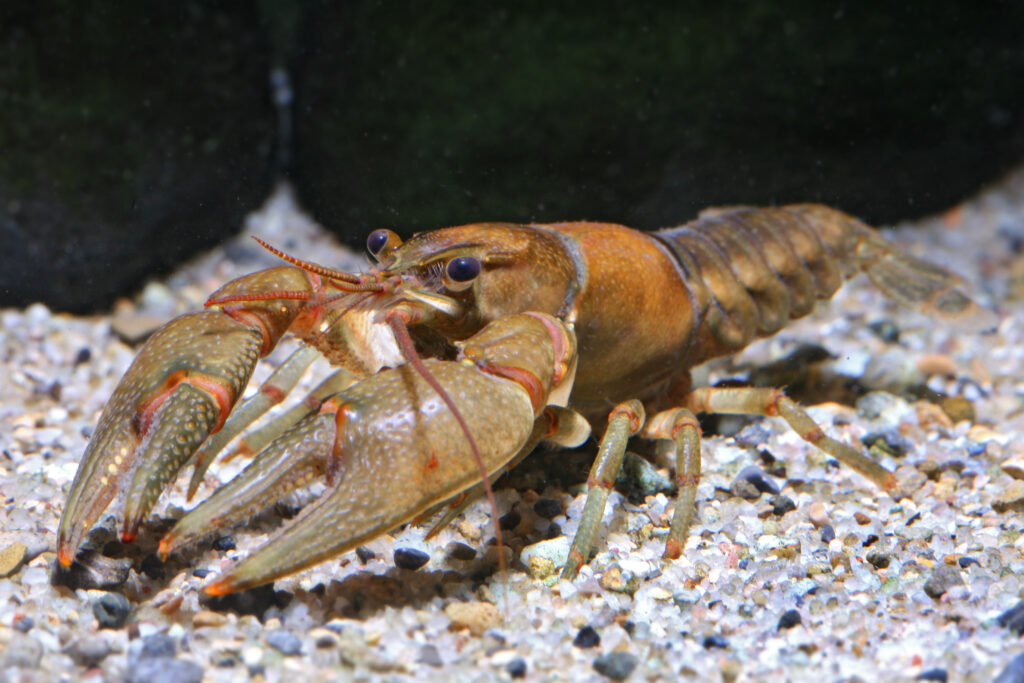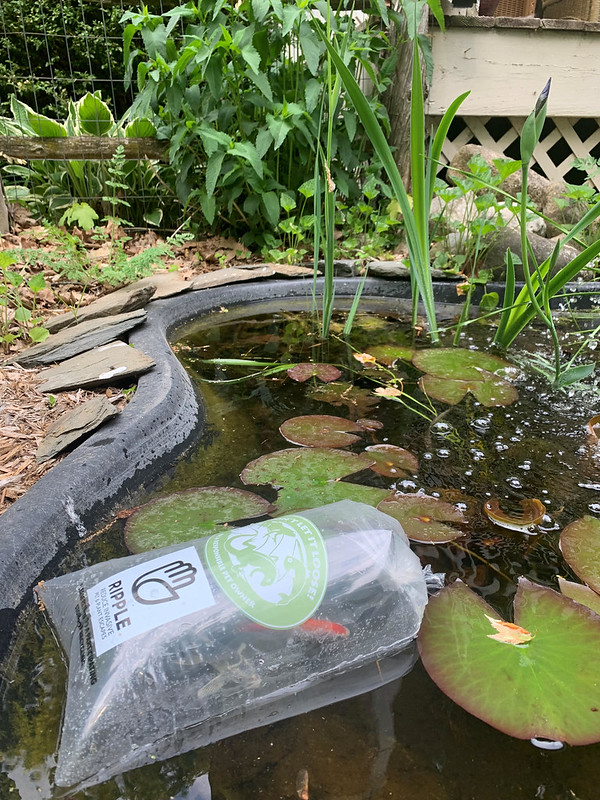Lesson Summary
In this lesson, students explore native and invasive crayfish species of the Great Lakes and their roles in freshwater ecosystems.
Activity options include having students brainstorm what they already know about native and invasive crayfish, matching cards of crayfish ecosystem roles and photos with their descriptions, and writing creatively about what they have learned.
This lesson is adaptable for grades 3-12. See the “Enrich/Extend” section near the end of the lesson with more ways to engage all learners.
Photo Credit: C.A. Taylor
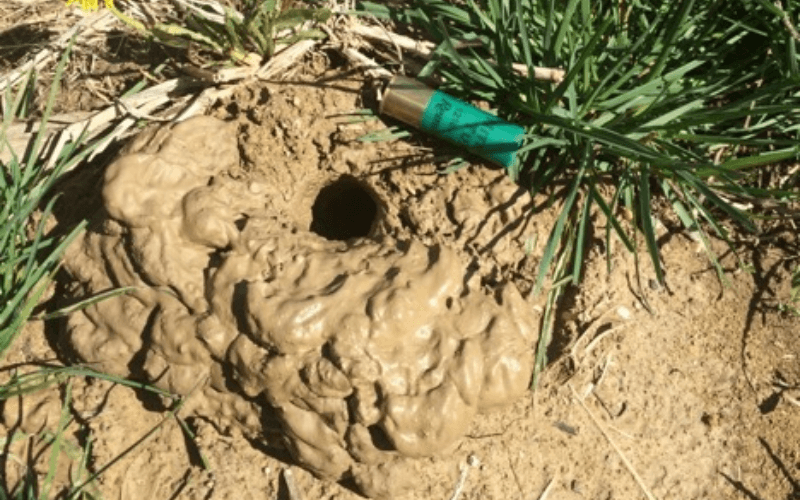
Objectives
Students will accomplish the following goals upon completing this lesson:
- Increase students’ understanding of native and invasive crayfish and their roles in freshwater ecosystems
- Get students to think critically about how invasive crayfish can be a threat to different native species and biodiversity
- Increase students’ understanding of how certain species can have negative impacts on ecosystems
- Increase students’ understanding of the various ways that invasive
- crayfish can be introduced to new waterbodies
Students will meet the following objectives upon completing this lesson:
- Students will learn about species from the Great Lakes region to determine their roles in freshwater ecosystems.
- Students will demonstrate understanding of native and invasive crayfish species, including ways to identify them and their impacts on freshwater ecosystems.
- Students will express orally and/or in writing what they have learned about native and invasive crayfish and their impacts on freshwater ecosystems.

Lesson Alignment
Next Generation Science Standards: Performance Expectations: MS-LS2-3, MS-LS2-1
Next Generation Science Standards: Building Toward: MS-LS2-4, MS-LS1-6, HS-LS2-3, HS-LS2-4, HS-LS2-5, HS-LS2-6, HS-LS1-5
Next Generation Science Standards: Crosscutting Concepts Structure Function, Cause and Effect: Mechanism and Explanation, Stability and Change
Next Genertion Science Standards: Science & Engineering Practices Asking Questions and Defining Problems, Obtaining, Evaluating, and Communicating Information, Constructing Explanations and Designing Solutions
Next Generation Science Standards Core and Component Ideas in Life Science: LS1.A, LS1.B, LS2, LS2.A, LS2.C
Common Core State Standards
Speaking and Listening Standards for Gr. 6- S1, S4, S6 (Similar standards exist for Gr.4-5 and 7-12)
College and Career Readiness Anchor Standards for Writing- S6, S7
Materials
Access printed copies or electronic versions of lesson materials below.
- Optional: Markers, crayons, or colored pencils for students to share
- Optional: Posterboard
Background Information for Educator
Crayfish Diversity
Common Native and Invasive Crayfish of the Great Lakes Region
One per student or per group of 3-4 students
Crayfish Roles and Introduction Pathways Cards
One per student or per group of 3-4 students
Communitcating about Crayfish and their Impacts
One per student
Stone Soup: Invasive Species and Cartooning
Optional Material
Invasive Crayfish Collaborative Website
Additional Resources
Investigating Crayfish and Freshwater Ecosystems
Full Curriculum
Time Required
Completion of this lesson may require 1-2 class periods to complete.
Activity Set-Up
Ensure all materials above are ready for student use. Cut up role cards and separate them into two groups:
- crayfish roles and impacts of invasive crayfish
- introduction pathways
Optional: Learn more about topics addressed in the lesson with the sources listed in the “More Resources/References” section at end of the lesson to prepare to answer student questions.
Optional: Arrange for a guest speaker with expertise on freshwater habitat restoration projects to visit your class. Contact us for possible recommendations: | LINK.
Photo Credit: Zack Graham
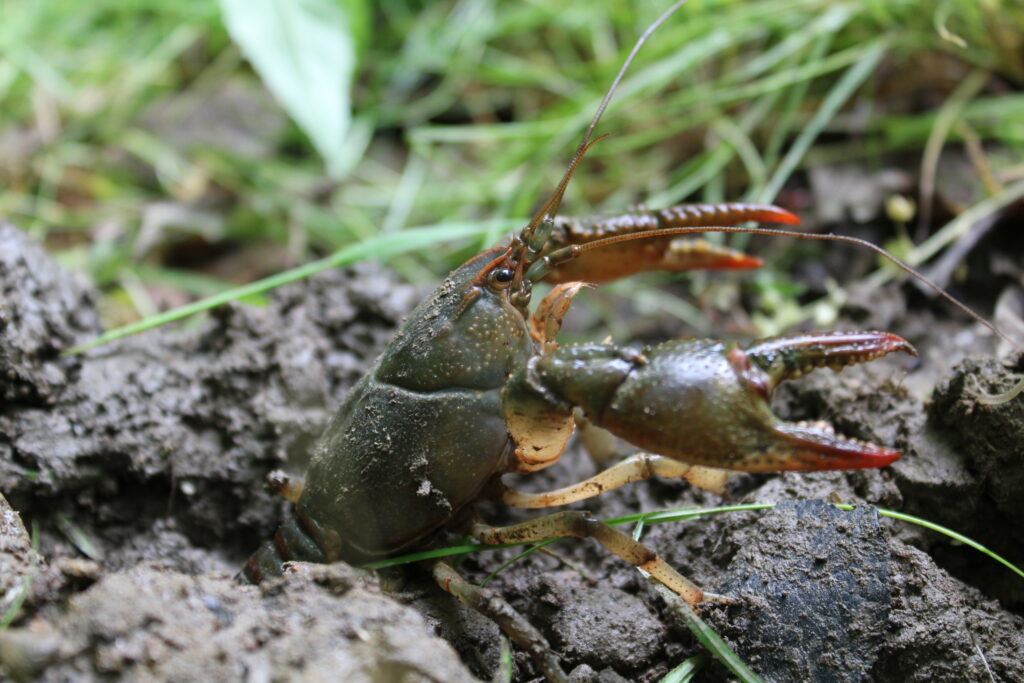
Lesson
Engage
Engage students by showing them live crayfish (if available) or preserved crayfish. Pass out the “Common Native and Invasive Crayfishes of the Great Lakes Region” guides and ask them to work in small groups of 3–4 students to identify the species, using the guides, prior knowledge, and/or additional research.
Explore
After a few minutes, discuss student ideas and how they were able to identify the species.
Ask students to take out their science notebooks or blank paper. Invite them to draw a vertical line down a blank page to create two columns of about the same width. Ask them to label the first column “Crayfish Roles” and the second column “Impacts of Invasive Crayfish.” Invite them to brainstorm ways native crayfish can benefit their ecosystems and record those ideas in the first column. Negative impacts of invasive crayfish can also be brainstormed in their groups; students can record their ideas in the second column.
Circulate through the groups, answering (and asking) questions to help them get started (if necessary). After a few minutes, tell students they will have one more minute to brainstorm and to be prepared to share their best ideas with the class.
Allow groups to share their ideas and then pass out the sets of cards that describe crayfish roles and impacts from the end of the lesson. Ask them to work with their groups to try to match the photo cards with the correct descriptions, as well as organize them into groups for the positive roles of natives and negative impacts of invasive crayfish.
Explain
Pass out the “Communicating about Crayfish + Their Impacts” handout, one for each student. Ask them to read through the questions together and discuss their ideas. Then invite them to write creatively to complete the activity. Circulate through the room to support students, or you might consider taking them outside to work.
After about 15 minutes, tell them they can take a break in two minutes to share one of their creative responses if they would like to do so.
After a couple of minutes, invite students to share one of their responses with the class and discuss it.
Give students most of the remainder of the class to complete their responses. Tell them that they can also continue writing outside of class time, if desired. Five minutes before the end of class, ask more students to share their responses with the class. Discuss the issues they raise in their funny stories, etc.
Close with a discussion of different ways invasive species can be introduced to ecosystems and ways that students can help prevent the problem. You might also ask students to discuss ways they might help to reduce problems of invasive crayfish after they havealready been introduced.
Extend
Invite students to choose a native or invasive species from the guide to create posters about them.
Pass out posterboard (if available) or students could use backs of used sheets or posters to create colorful, labeled scientific illustrations of the species. Students can annotate the illustrations with descriptions and how they impact their ecosystems.
Invite students to conduct additional research, as necessary. They may use the Internet and other available reference sources; they should cite the sources they use for additional information.
Students can observe live or preserved crayfish and/or their body parts under magnification with a microscope, hand lens, and/or macro lens. You can also use a microscope or macro lens connected to an electronic device and/or data projector to show them to the whole class.
Invite students to create public service announcement videos about ways to help keep invasive crayfish out of our ecosystems.
Ask students to use the “Native & Invasive Crayfish of the Great Lakes Region” guide to help them compare a native crayfish species found in your area with an invasive crayfish species that is causing problems in your area. This can be done using a graphic organizer such as a Venn diagram and/or a written analysis.
Have students read cartoons about invasive crayfish and/or create their own cartoons. Excellent examples and ideas are listed in the “Stone Soup: Invasive Species and Cartooning” lesson plan found in the materials block.
Evaluate
Review student projects and answers to the handout questions.
Use student participation in class discussion and activities to help determine student understanding.
Record levels of oral participation and student understanding of native and invasive crayfish and their impacts on freshwater ecosystems, etc.
Ask students to reflect on the lesson in writing and/or orally, including about what they learned and what you, as the teacher, might do to improve the lesson next time.
Resources
Expand Knowledge + Skills
- Axelsson, E., Nyström, P., Sidenmark, J., & Brönmark, C. (1997). Crayfish predation on amphibian eggs and larvae. Amphibia-Reptilia, 18(3), 217-228.
- Baker, R. H., Newman, C. C., & Wilke, F. (1945). Food habits of the raccoon in eastern Texas. The Journal of Wildlife Management, 9(1), 45-48.
- “Common Crayfishes of the Chicago Region.” Field Museum: | LINK
- “Crayfish: Identify Aquatic Invasive Species.” | LINK
- “Crayfish of Michigan.” Poster from Michigan Dept. of Natural Resources: | LINK
- Creed, R.P., & Reed, J.M. (2004). Ecosystem engineering by crayfish in a headwater stream community. Journal of the North American Benthological Society, 23(2), 224-236.
- DiStefano, R. J. (2005). Trophic interactions between Missouri Ozarks stream crayfish communities and sport fish predators: increased abundance and size structure of predators cause little change in crayfish community densities.
- Missouri Department of Conservation, Dingell-Johnson Project F-1-R-054, Study S-41, Job, 4.
- “Field Guide to Crayfishes of the Midwest.” University of Illinois Urbana-Champaign: | LINK
- Goldman, C. R. (1973). Ecology and physiology of the California crayfish Pacifastacus leniusculus (Dana) in relation to its suitability for introduction into European waters. Freshwater Crayfish, 1, 105-120.
- Gowing, H., & Momot, W. T. (1979). Impact of brook trout (Salvelinus fontinalis) predation on the crayfish Orconectes virilis in three Michigan lakes. Journal of the Fisheries Board of Canada, 36(10), 1191-1196.
- “Great Lakes Crayfish Regulation.” Invasive Crayfish Collaborative: | LINK
- Helfrich, L.A. and DiStefano, R.J. “Sustaining America’s Aquatic Biodiversity–Crayfish Biodiversity and Conservation.” Dept. of Fisheries and Wildlife Sciences, Virginia Tech: | LINK
- Hoopes, D. T. (1960). Utilization of mayflies and caddis flies by some Mississippi River fishes. Transactions of the American Fisheries Society, 89(1), 32-34.
- Huryn, A.D., & Wallace, B.J. (1987). Production and litter processing by crayfish in an Appalachian mountain stream. Freshwater Biology, 18(2), 277-286.
- “Invasive Crayfish 101.” Invasive Crayfish Collaboration: | LINK
- “Invasive Species in the Great Lakes.” EPA: | LINK
- Kreps, T. A., Baldridge, A. K., & Lodge, D. M. (2012). The impact of an invasive predator (Orconectes rusticus) on freshwater snail communities: insights on habitat-specific effects from a multilake long-term study. Canadian Journal of Fisheries and Aquatic Sciences, 69(7), 1164-1173.
- Lodge, D. M. & Lorman, J. G. (1987). Reductions in submersed macrophyte biomass and species richness by the crayfish Orconectes rusticus. Canadian Journal of Fisheries and Aquatic Sciences, 44(3), 591-597.
- Lodge, D. M., Taylor, C. A., Holdich, D. M., & Skurdal, J. (2000a). Nonindigenous crayfishes threaten North American freshwater biodiversity: lessons from Europe. Fisheries, 25(8), 7-20.
- “Marbled Crayfish Raises Eyebrows, and Concerns.” Great Lakes Now: | LINK
- Martin, R. P., & Hamilton, R. B. (1985). Wading bird predation in crawfish ponds. Louisiana Agriculture-Louisiana Agricultural Experiment Station.
- “Michigan Crayfish–Understanding Our Native and Invasive Species.” Michigan Lakes & Streams Association: | LINK
- “Michigan’s Native Crayfish and the Threats of a New Invader.” Huron River Watershed Council: | LINK
- Momot, W. T. (1996). History of the range extension of Orconectes rusticus into northwestern Ontario and Lake Superior. Freshwater Crayfish, 11, 61-72.
- Nakata, K., & Goshima, S. (2006). Asymmetry in mutual predation between the endangered Japanese native crayfish Cambaroides japonicus and the North American invasive crayfish Pacifastacus leniusculus: a possible reason for species replacement. Journal of Crustacean Biology, 26(2), 134-140.
- Newsome, G. E., & Gee, J. H. (1978). Preference and selection of prey by creek chub (Semotilus atromaculatus) inhabiting the Mink River, Manitoba. Canadian Journal of Zoology, 56(12), 2486-2497.
- Olden, J. D., McCarthy, J. M., Maxted, J. T., Fetzer, W. W., & Vander Zanden, M. J. (2006). The rapid spread of rusty crayfish (Orconectes rusticus) with observations on native crayfish declines in Wisconsin (USA) over the past 130 years. Biological Invasions, 8(8), 1621-1628.
- Ontario’s Invading Species Awareness Program: Invasive Invertebrates: | LINK
- Page, L. M. (1985). The crayfishes and shrimps (Decapoda) of Illinois. Illinois Natural History Survey Bulletin; v. 033, no. 04.
- Parkyn, S. M., Collier, K. J., & Hicks, B. J. (2001). New Zealand stream crayfish: functional omnivores but trophic predators?. Freshwater Biology, 46(5), 641-652.
- Peters, J.A. et al (2014). “Historical Changes and Current Status of Crayfish Diversity and Distribution in the Laurentian Great Lakes.”: | LINK
- Probst, W. E., Rabeni, C. F., Covington, W. G., & Marteney, R. E. (1984). Resource use by stream-dwelling rock bass and smallmouth bass. Transactions of the American Fisheries Society, 113(3), 283-294.
- Rabeni, C. F. (1992). Trophic linkage between stream Centrarchids and their crayfish prey. Canadian Journal of Fisheries and Aquatic Sciences, 49(8), 1714-1721.
- Rahel, F. J., & Stein, R. A. (1988). Complex predator-prey interactions and predator intimidation among crayfish, piscivorous fish, and small benthic fish. Oecologia, 75(1), 94-98.
- “Research Reveals Hope for Managing Invasive Red Swamp Crayfish.” U.S. Fish & Wildlife Service: | LINK
- Reynolds, J., Souty-Grosset, C., & Richardson, A. (2013). Ecological roles of crayfish in freshwater and terrestrial habitats. Freshwater Crayfish, 19(2), 197-218.
- Richardson, A. M. (1983). The effect of the burrows of a crayfish on the respiration of the surrounding soil. Soil Biology and Biochemistry, 15(3), 239-242.
- Richardson, A. M. (2007). Behavioral ecology of semiterrestrial crayfish. Evolutionary Ecology of Social and Sexual Systems: Crustaceans as model organisms, 319-338.
- Richman, N. I., Böhm, M., Adams, S. B., Alvarez, F., Bergey, E. A., Bunn, J. J., … & Dawkins, K. L. (2015). Multiple drivers of decline in the global status of freshwater crayfish (Decapoda: Astacidea). Phil. Trans. R. Soc. B, 370(1662), 20140060.
- Schofield, K.A., Pringle, C.M., Meyer, J.L., & Sutherland, A.B. (2001). The importance of crayfish in the breakdown of rhododendron leaf litter. Freshwater Biology, 46(9), 1191-1204.
- Statzner, B., Fievet, E., Champagne, J. Y., Morel, R., & Herouin, E. (2000). Crayfish as geomorphic agents and ecosystem engineers: biological behavior affects sand and gravel erosion in experimental streams. Limnology and Oceanography, 45(5), 1030-1040.
- Statzner, B., Peltret, O., & Tomanova, S. (2003). Crayfish as geomorphic agents and ecosystem engineers: effect of a biomass gradient on baseflow and flood-induced transport of gravel and sand in experimental streams. Freshwater Biology, 48(1), 147-163.
- Taylor, C. A., & Redmer, M. (1996). Dispersal of the crayfish Orconectes rusticus in Illinois, with notes on species displacement and habitat preference. Journal of Crustacean Biology, 16(3), 547-551.
- Taylor, C. A., Schuster, G. A., & Wylie, D. B. (2015). Field Guide to Crayfishes of the Midwest. Manual 15. Illinois Natural History Survey, Champaign, Illinois. 145 pages.
- Toweill, D. E. (1974). Winter food habits of river otters in western Oregon. The Journal of Wildlife Management, 107-111.
- Wiggs, J. N. (1976). Food habits, starvation and growth in the Hellbender, Cryptobranchus alleganiensis. MSU Graduate Theses. 649.
- Wilson, K. A., Magnuson, J. J., Lodge, D. M., Hill, A. M., Kratz, T. K., Perry, W. L., & Willis, T. V. (2004). A long-term rusty crayfish (Orconectes rusticus) invasion: dispersal patterns and community change in a north temperate lake. Canadian Journal of Fisheries and Aquatic Sciences, 61(11), 2255-2266.
Videos
Disclaimer: The linked YouTube video below may contain advertisements that can interrupt viewing. These ads are typically placed by content creators or YouTube and may vary in length and frequency.
Lessons/Activities
- “Bugs Don’t Bug Me” and many more aquatic macroinvertebrate lessons, in the “Stream Side Science” program from Utah State Univ. Extension Service: | LINK
- IDAH2O water education resources, including curriculum and videos, Univ. of Idaho Ext.: | LINK
- Washington Invasive Species Council curriculum: | LINK
- “Watershed Detectives” lesson from Utah State University Ext.: | LINK
Education Standards
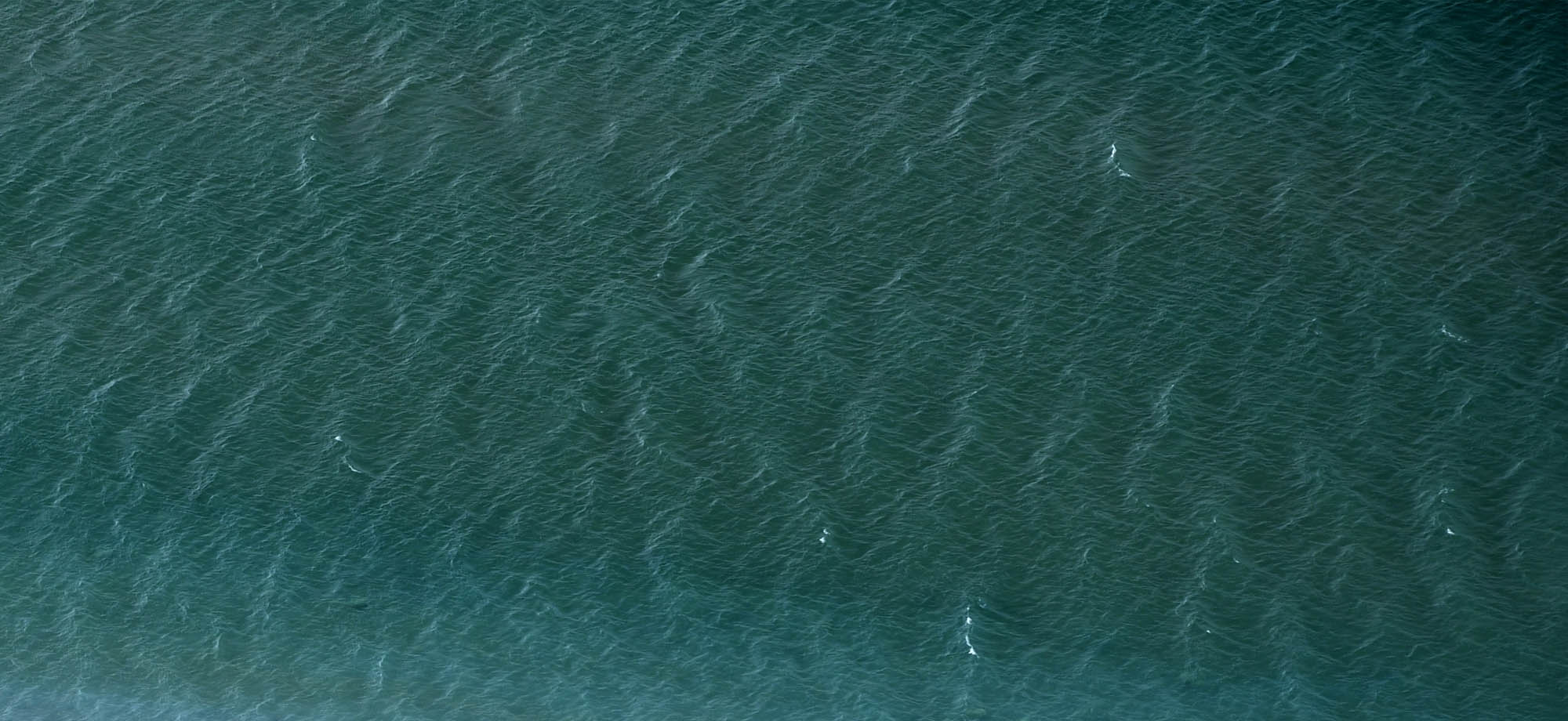
This lesson is part of a larger curriculum, Investigating Crayfish and Freshwater Ecosystems.
